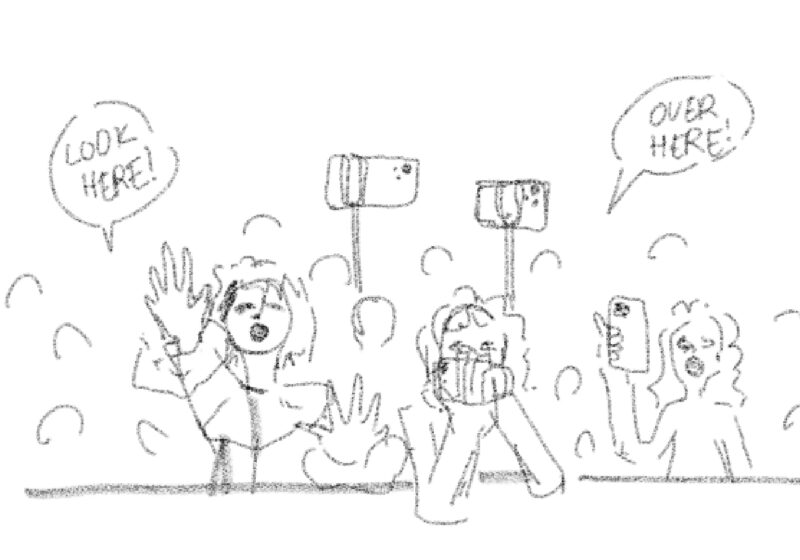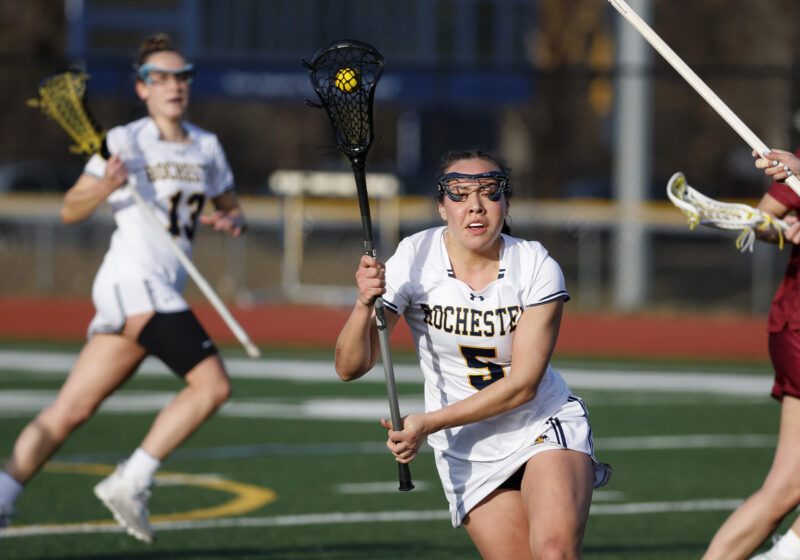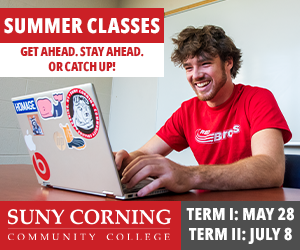A series of comics recently published in the Campus Times is causing controversy at UR and in the Rochester community. The cartoons in question, drawn by juniors Chuck Zhang and Brendan Woodcock, have led to accusations of racism.
“I can see the KKK running [the cartoon by Woodcock] but not a normal newspaper,” stock service worker Rich Learn said.
The Campus Times published an installment of Zhang’s regular comic “Undersexed” on Oct. 31 that incited a series of commentaries as well as rebuttal cartoons. This eventually created a debate among UR students regarding the tradition of freedom of the press for the CT and the intentions of Zhang and Woodcock.
The debate has caught the attention of local media, leading to a story from Rochester’s NBC News 10, two broadcasts from 103.9 FM on their morning show, the Water Cooler and an article in the Democrat and Chronicle.
President Thomas Jackson is also concerned. “The Campus Times’ rights of uncensored press are important and also carry with it important responsibilities to the community,” Jackson said. “I believe the CT was attempting to fulfill those responsibilities here, but the method was far, far too opaque and difficult to discern.”
“University communities are committed to free speech, but we also recognize that this freedom can sometimes have costly consequences,” the undergraduate deans, including Dean of Students Jody Asbury and Director of Minority Student Affairs Norman Burnett said in a statement prepared by Dean of The College William Green.
The first cartoon, drawn by Zhang, was preceded by the words “this almost happened” and depicted a white man and black man preparing for Halloween. The black man appears wearing a costume with the word “igger” on it. The white character responds by asking “Whats an ‘igger?'” The black character then proceeds to beat up the white character, in response to the implied racial term, calling him a “damn crackah.”
“[The cartoon] was a personal story,” Zhang said. “I didn’t think people would be so hypersensitive.” Zhang defends his comic, saying that it was based on a personal experience and that he was playing a word game, not attempting to create a stereotype.
The Black Students’ Union disagreed. “We, the Black Students’ Union, felt that this comic was offensive because it seemed to convey the message that black people put themselves in the position to be called racial slurs and when called one they respond in unintelligent, violent ways,” the Executive Board of BSU said in an official statement.
Executive Comics Editor Joan Knihnicki said she did not see the potential for problems when she first read the comic. “To be honest, I didn’t see [Zhang’s cartoon] as racially offensive,” Knihnicki said.
Woodcock wrote to the CT in response to Zhang’s comic. He felt the stereotypes were implied and that an apology drawn by Zhang, which was published in the Nov. 7 edition, was not sufficient. “The apology wasn’t talking to the issue, not to the subtle racism,” Woodcock said. “”We have a problem that we ignore subtle racism.”
Woodcock responded to Zhang’s original cartoon by creating his own cartoon, entitled “When Comics Aren’t Funny.” Woodcock’s cartoon shows a black man entering a store and asking the white store owner about all the “crackers,” in reference to the boxes of crackers drawn behind the counter of the store. The white man is then shown with the attached comment, “Damn N!**?#s need to learn some respect,” as the black man hangs from a tree in the background.
“It was wrong what [Brendan Woodcock] said [in his comic],” Hutchison Cart service worker Ebony Leeflore said. While Leeflore was offended by the drawing, she also feels that the broadcasts should cease.
“I know [Woodcock]. I know he’s not a racist,” she said.
BSU also supports Woodcock. “A member of the Executive Board [of BSU] was aware ahead of time of the author’s actions and completely understood his intentions,” BSU said in an official statement.
Although he believes that what he said was necessary, Woodcock conceded that the presentation could have been altered. “I could [have] talked about contemporary issues. [I could] work on the clarity of interpretation,” he said.
Editor-in-Chief and senior Todd Hildebrandt said he takes responsibility for the decision to run the comic. “When placed in to a greater context, the message of the comic was not racist,” he said. “I felt that we made a sincere effort to clarify Brendan’s message to our readers.”
Knihnicki hesitated to run Woodcock’s comic. “I thought [Woodcock’s cartoon] was exacerbating the issue. I was offended by it and did not want to put it in,” she said.
Though some CT staff members were opposed to the comic, Hildebrandt made the final decision to include it in the paper after a staff discussion.
Hildebrandt thinks the writer’s intent is key. “I think freedom of speech does have its limits,” he said. “If we had viewed the comic as racist, it wouldn’t have run.”
After its publication, Jackson saw that the comic was potentially offensive. “Unless one studied [Woodcock’s comic] carefully’? not just the comic strip but its title and the link at the bottom of the page to an editorial on a different page, and the reference to yet another comic strip from two weeks earlier,” he continued, “it was all too easy to view this strip as tasteless, or worse, offensive, rather than an effort to positively contribute to the understanding of the problems of hurtful speech on campus.”
The campus community questions running the comic. “When I saw the hanging it made me mad,” William E. Simon Graduate School of Business Administration service worker Ramona Gray said. “For somebody to print a cartoon, they should have thought first.”
Not everyone agrees. “Actually someone had to explain the offense to me,” sophomore and Pit service worker Ope Osoda said. “I don’t really care much about it.”
“[Woodcock’s comic] is supposed to be a commentary on racism,” freshman Charley Beller said. “I don’t think it should be a major issue.”
Vice President and General Secretary Paul Burgett views the publication of the comics as representing a larger issue. ” This incident is unfortunate because it demonstrates how otherwise well-intended plans can go awry,” he said.
Hildebrandt also felt that the first story aired on News 10 was unfair. “I was disappointed with the original News 10 coverage,” Hildebrandt said. “They made no attempt to contact [the CT].”
News 10 News Director Bill Seitzler explained the decision to run the piece. “[The comic] was a legitimate news story,” he said. According to Seitzler, the lead came in from an outside source concerned about the images.
Students have several venues to voice concerns, according to Director of the Student Activities and Wilson Commons Anne-Marie Algier. “This is their [student] paper,” she said. “The best way to change is from the inside.”
Algier also mentioned that possible solutions include dialogues in a Web-based forum, inviting an editor from the Democratic and Chronicle to offer further training for the CT and discussions with the Diversity Roundtable.
Chair of the Diversity Roundtable Norm Burnett believes that dialogue is a viable solution. “I think it is always healthy to have dialogue, so long as it is constructive and is well facilitated.”
Jackson believes there are lessons to be learned from the situation. “I believe all those involved had the best of intentions, but straightforward clarity is oftentimes more important than cleverness,” Jackson said. “I suspect the CT has learned an important lesson.”





